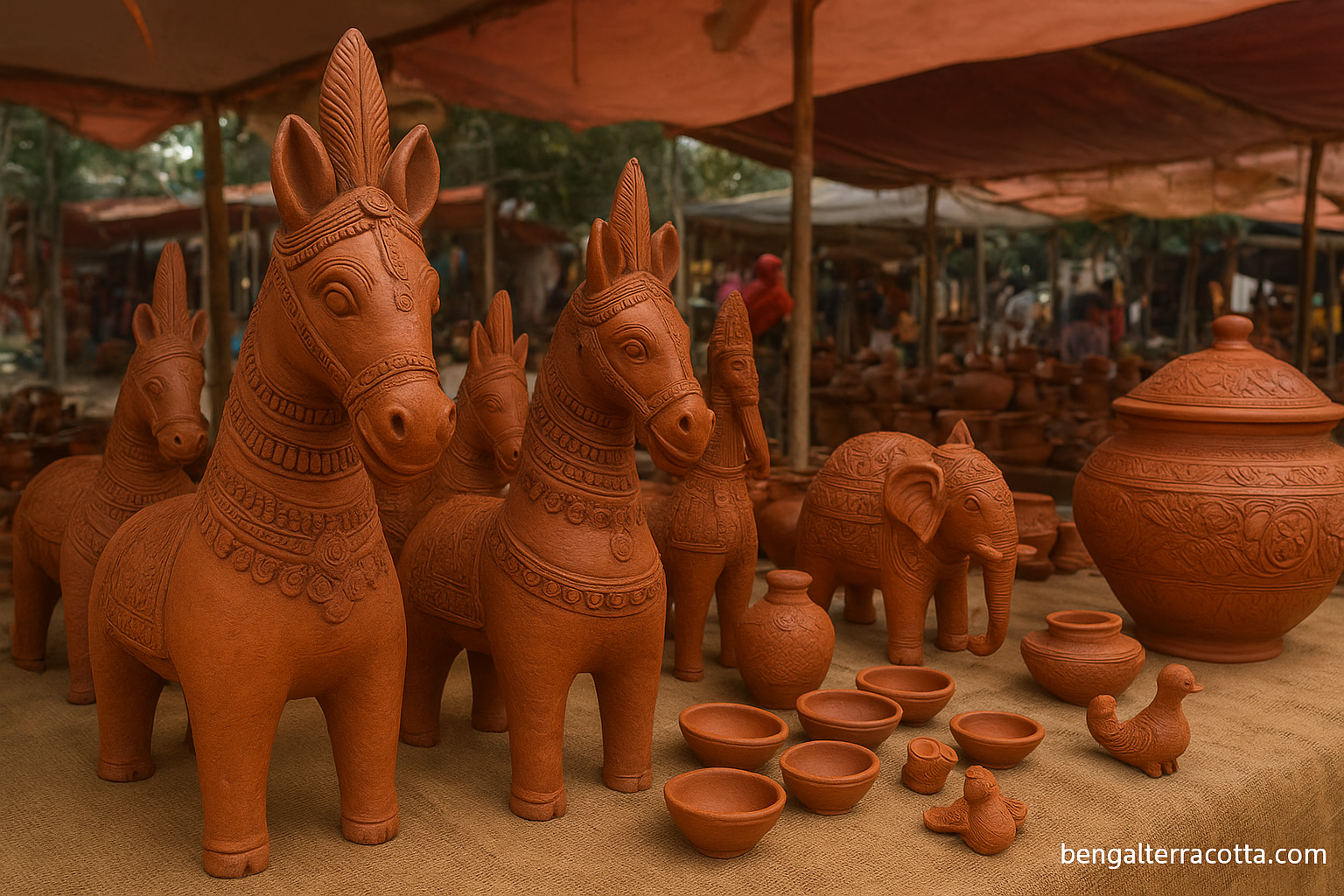Terracotta has always been one of the most expressive mediums of Indian art, telling stories through clay molded by skilled hands. Among the many regions known for their terracotta heritage, Bankura and Bishnupur in West Bengal hold a place of pride, celebrated for their unique craftsmanship, history, and cultural significance.
The Legacy of Bankura Terracotta
Bankura is world-renowned for its Bankura horses, often considered a symbol of Bengal’s folk art. These horses, with their elongated necks, flared ears, and intricate surface patterns, are not just decorative but deeply spiritual. Traditionally, they were offered to village deities or used in ritual worship, symbolizing strength, energy, and devotion. Over time, they evolved into a popular decorative piece, earning global recognition for their aesthetic appeal.
The terracotta craft of Bankura reflects the intimate relationship between rural life and nature. Craftsmen use locally available red clay, sun-drying the models and then firing them in kilns. The earthy tones of terracotta connect directly with the soil and culture of the region, making each piece authentic and rooted in tradition.
The Glory of Bishnupur Terracotta
Bishnupur, just a few kilometers away, is equally celebrated but for its magnificent terracotta temples. Built primarily during the reign of the Malla kings (16th–18th century), these temples are masterpieces of architecture and sculpture. The temples—such as the Rasmancha, Jor Bangla, Madan Mohan, and Shyam Rai—are covered with intricate terracotta panels depicting scenes from the Ramayana, Mahabharata, and Puranas, as well as glimpses of everyday rural life.
These panels are not just art; they are visual storytelling in clay. Every brick narrates a tale—gods, kings, musicians, dancers, and even hunters are immortalized in baked earth. What makes Bishnupur’s terracotta temples unique is the fusion of local folk styles with influences from Bengal’s religious and cultural traditions.
The Artisans and Their Craft
Both Bankura and Bishnupur terracotta are sustained by generations of artisans who continue to mold clay into forms that carry centuries of legacy. Their work is painstaking, from preparing clay to firing, often done in traditional ways passed down orally. Despite modernization, these artisans remain committed to preserving the authenticity of the craft.
Today, terracotta from these regions has found new expressions—home décor, jewelry, wall hangings, and more—making the art relevant to contemporary tastes while staying rooted in heritage.
Why Bankura & Bishnupur Terracotta Matters
The terracotta art of Bankura and Bishnupur is more than just craft—it is a cultural identity, a history etched in clay. It embodies Bengal’s folk traditions, religious devotion, and rural simplicity, while also showcasing unmatched craftsmanship.
Visitors to these regions are often awestruck by the sight of Bishnupur’s terracotta temples standing proudly even after centuries, and by the elegance of the Bankura horse, still crafted with the same love and devotion as in ancient times. Together, they represent a living tradition that continues to inspire and evolve.

